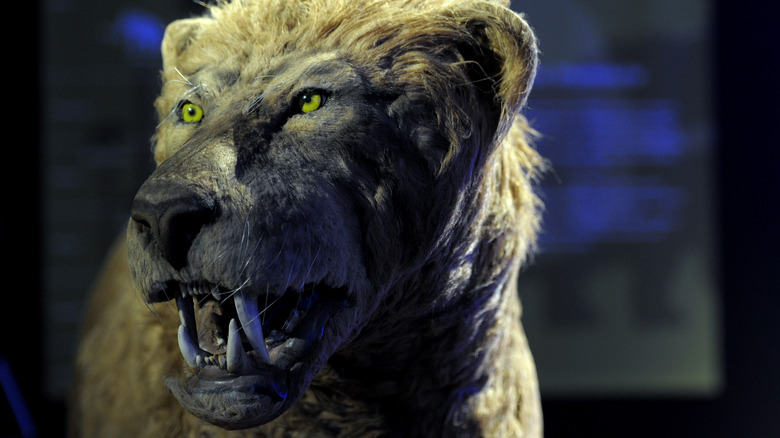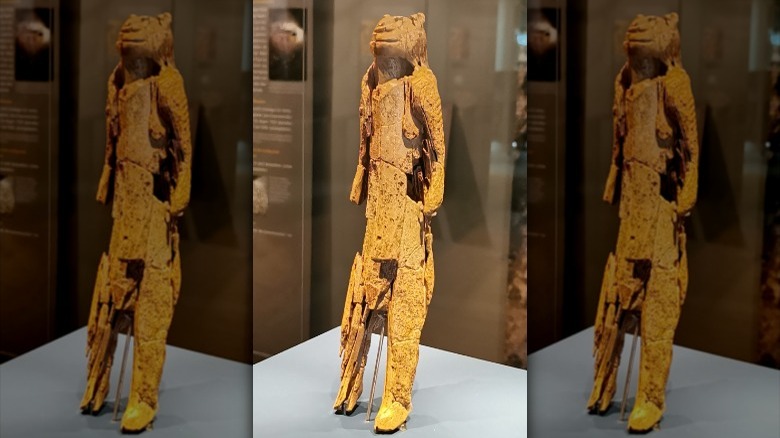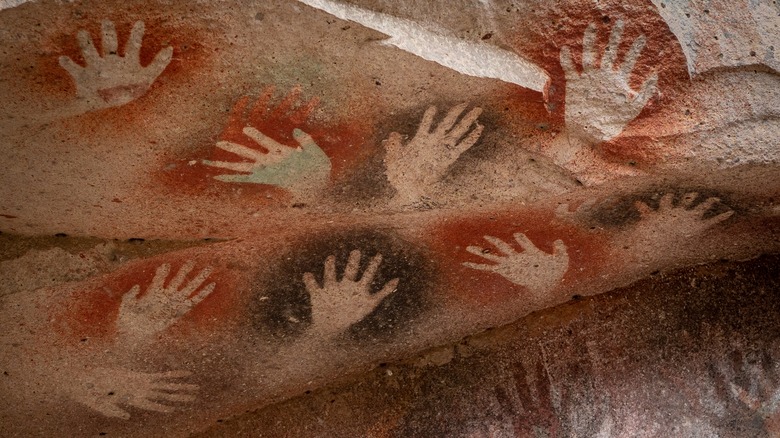What A 40,000-Year-Old Statue Discovered In Germany Can Tell Us About Early Human Behavior
Anyone remember "ThunderCats"? It's that 1980's cartoon starring cat-people warriors like Lion-O, Cheetara, Snarf, and having a really awesome theme song that nostalgia hunters can now listen to anytime on YouTube? And they're fighting, for some reason, a mummy dude named Mumm-Ra who always looks in serious need of a glass of water? There was also some kind of 2020 remake, but come on — we all know that originals beat rehashes every day. But wait, you say: There was another, even older original before the '80s ThunderCats? Do tell. How old, again? 40,000 years old?
Yes, this is more or less the case. Discovered in a cave in Germany in 1939, the 40,000-year-old Lion Man ivory carving is the oldest known human carving in existence. It's exactly what the name says: A human-bodied, lion-headed figurine. It stands tall, upright and thin with its arms held to its sides, as The British Museum shows. Is it a kid's toy like a Lion-O action figure? Is it the byproduct of a singularly-focused stone age artist whose family was torn apart by a lion during his tragic backstory? Is it a god? Is it a simple reflection of hunter-forager preoccupations and the type of danger they face daily? These are the kinds of questions that the Lion Man statue raises. In the end, we can say one thing for sure: Carving such a figure out of ivory is no small task, and indicates some real importance to its maker.
Kid's toy, curio, or god?
The British Museum speculates about the origins and significance of the Lion Man. And we say "speculate" because the Lion Man stands alone amongst ancient artifacts. He was carved tens of thousands of years before the development of full-script cuneiform (a full, written language using all its grammar) in Mesopotamia sometime from 3,400 to 3,300 B.C.E., per the British Library. Not only is there zero writing that describes him, but we also have no way of knowing who created him, what group of people its creator belonged to, what they specifically believed, whether or not the Lion Man is indicative of culture as a whole, etc. In short, we know nothing for certain.
The British Museum rhapsodizes a bit about the sculpture, explaining, "He is powerful, mysterious and from a world beyond ordinary nature. He is the oldest known representation of a being that does not exist in physical form but symbolizes ideas about the supernatural," and that the statue might be, "part of a creation story or a human whose experiences on a journey through the cosmos to communicate with spirits caused this transformation." Or you know — not to speak too anachronistically — the Lion Man could have been a toy for a kid who thought lions were cool, like fans of "ThunderCats." And yet, a contemporary recreation using available tools indicates that the sculpture took 400 hours to make. That's way more effort than is needed for a mere curiosity.
Fireside rituals in the dark
As the Encyclopedia of Stone Age Art explains, the Lion Man — properly the Lion Man of Hohlenstein Stadel — comes from the "Aurignacian Era" of human art spanning 40,000 to 25,000 B.C.E. Most commonly, people associate this period with the kind of stencil art depicting human hands pressed against cave walls. So yes, the Lion Man is quite a jump in skill, dedication, and talent from blowing red ochre onto a hand, as the Encyclopedia of Stone Age Art describes. The British Museum discusses how the Lion Man was crafted when time was at an absolute premium. Hunter-foragers didn't exactly have the chance to loll around and twiddle with statues rather than strive to survive, especially in small, interdependent tribes where every action was critical and could tilt the group towards life or death.
On top of the methods employed in creating the Lion Man, we can look to where it was discovered for evidence of its meaning. The cave where it was found — Stadel cave in southern Germany — faces north and doesn't get a lot of sun. It's cold, damp, and not good for general living. The Lion Man was placed in a deep interior chamber next to fox teeth and deer antlers. This, plus the rubbed-out, worn surface of the statue, indicates that folks might have passed it around a lot, perhaps as part of a campfire ritual in the cave or some similar gathering.


